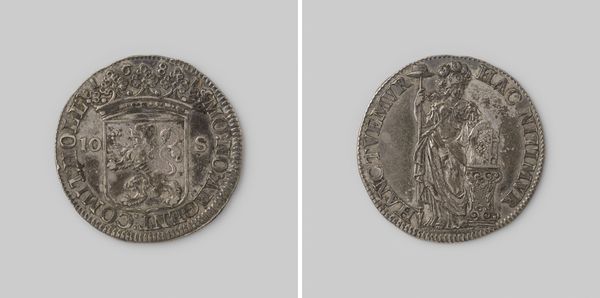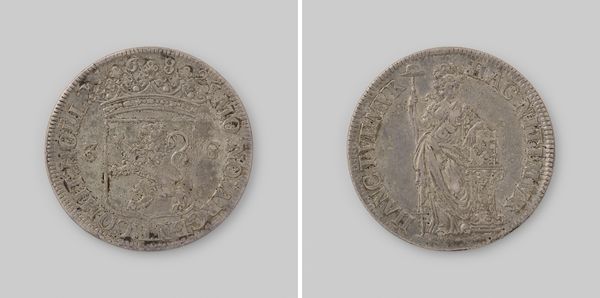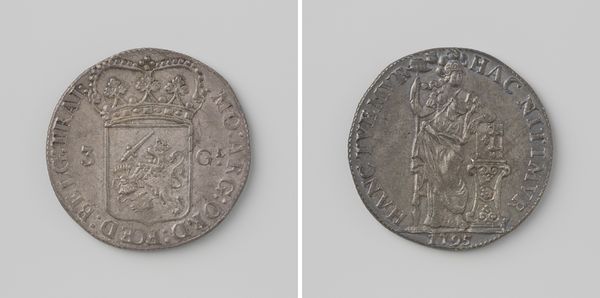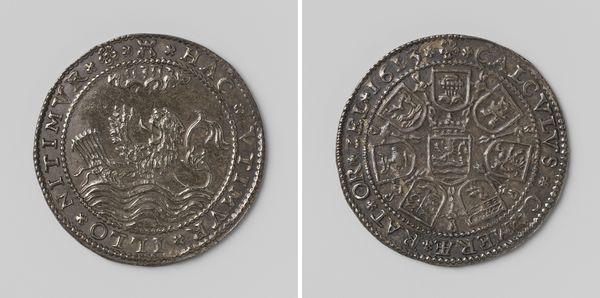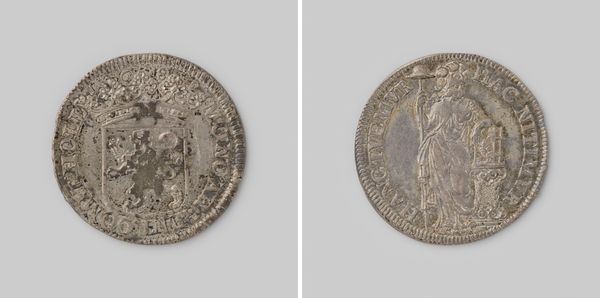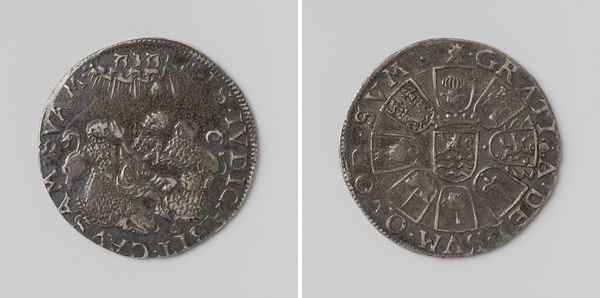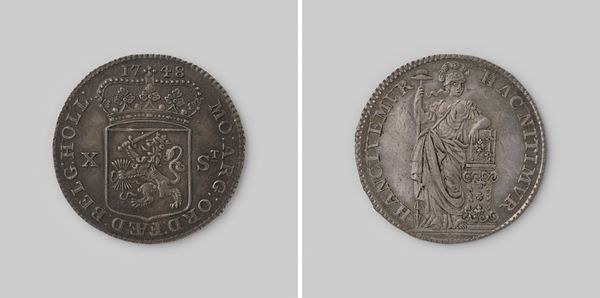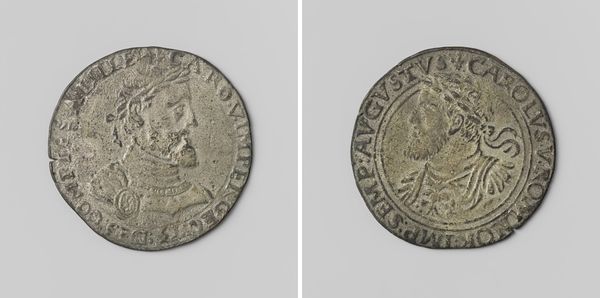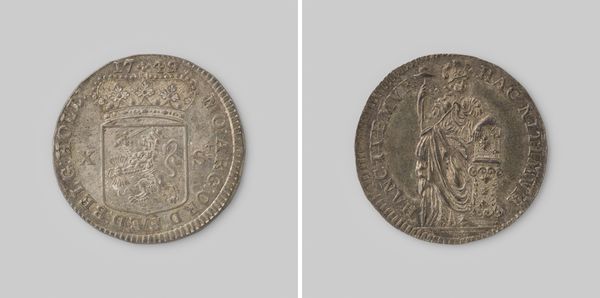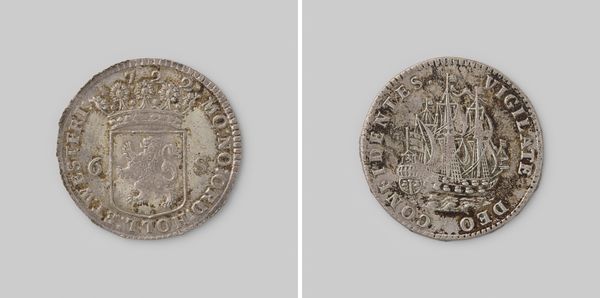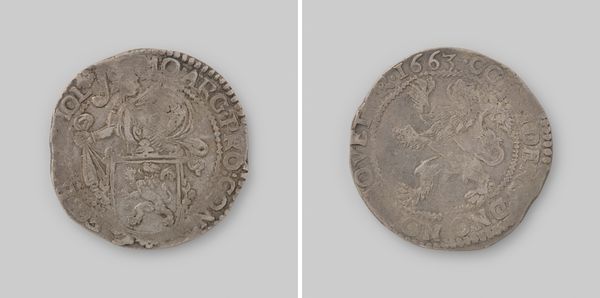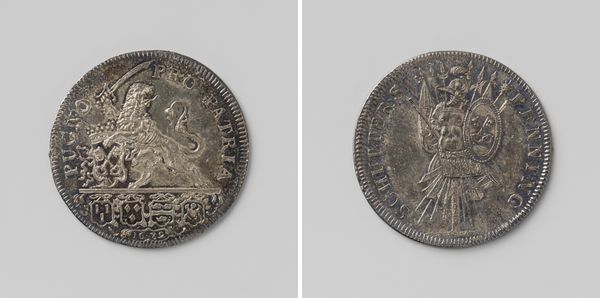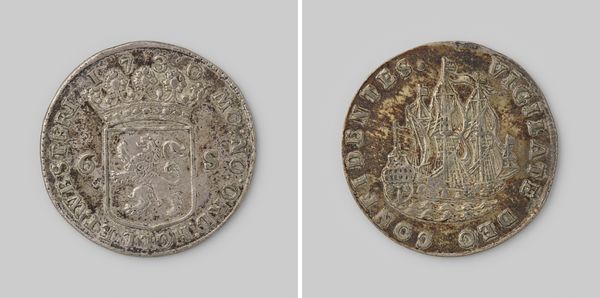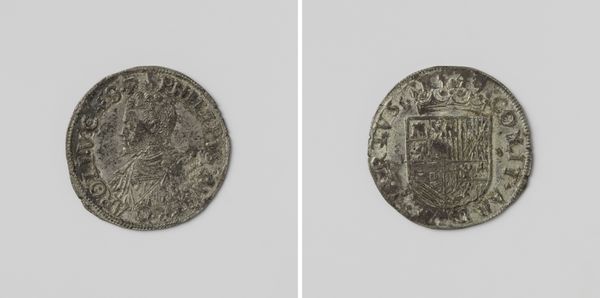
metal, relief, engraving
#
portrait
#
decorative element
#
dutch-golden-age
#
metal
#
relief
#
history-painting
#
decorative-art
#
engraving
#
decorative art
Dimensions: diameter 3.8 cm, weight 20.49 gr
Copyright: Rijks Museum: Open Domain
Editor: This is a Dutch two gulden coin from 1687, made of metal. What I find striking is the intricate relief and the stark contrast of the raised figures against the flat background. How do you approach interpreting this piece from a formalist point of view? Curator: We can examine the formal structure, the interplay of shapes, and the balance between the different elements to gain an understanding. Look at the obverse side; notice the heraldic lion centered within the shield. What compositional elements do you observe? Editor: I see a strong vertical axis with the lion and the crown, but there's also a circular motion created by the lettering around the edges, almost like it's trying to contain the power of the central image. Curator: Precisely. The inscription serves as a frame, guiding the viewer's eye. Now, consider the reverse. We have a standing figure, perhaps a personification of justice or liberty, rendered with linear precision. The texture also offers insight. Editor: There's a deliberate roughness to the surface, it isn't perfectly smooth, almost creating an atmosphere through texture. Is that something the engraver might have intentionally done to draw attention to its materiality? Curator: The irregularities in the metal can enhance the play of light and shadow, adding depth and dynamism. The weight, size and texture all impact meaning. By isolating these aesthetic properties, we aim to unlock the deeper structures. Editor: It's fascinating to consider something so small and seemingly functional as a carrier of such complex artistic choices. Thanks! Curator: Indeed. Formal analysis allows us to recognize and appreciate the artist's hand in shaping even the most utilitarian of objects.
Comments
No comments
Be the first to comment and join the conversation on the ultimate creative platform.
